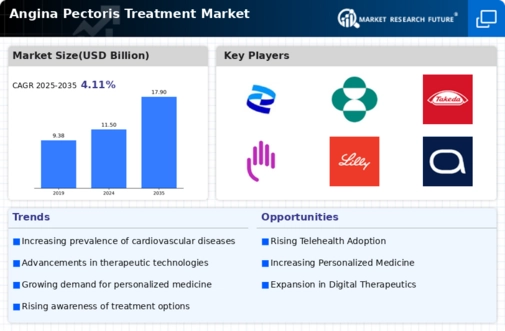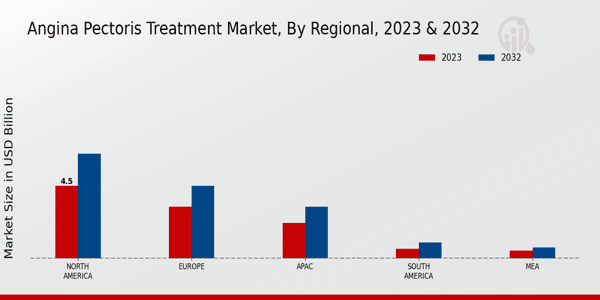Growing Geriatric Population
The global demographic shift towards an aging population is a crucial factor propelling the Global Angina Pectoris Treatment Market Industry. Older adults are at a heightened risk for cardiovascular diseases, including angina pectoris, due to the natural aging process and the accumulation of risk factors over time. As the United Nations projects that the number of individuals aged 60 and above will reach 2.1 billion by 2050, healthcare systems worldwide are likely to face increased pressure to address the needs of this demographic. This trend suggests a sustained demand for angina treatments, thereby contributing to the market's anticipated growth.
Increased Awareness and Screening
Heightened awareness regarding cardiovascular health and the importance of early detection is driving the Global Angina Pectoris Treatment Market Industry. Public health campaigns and educational initiatives have led to improved screening practices, enabling earlier diagnosis of angina pectoris. This proactive approach not only facilitates timely intervention but also encourages individuals to seek medical advice sooner. As a result, the market is likely to experience growth as more patients are identified and treated for angina, aligning with the projected CAGR of 4.11% from 2025 to 2035.
Advancements in Treatment Modalities
Innovations in treatment modalities for angina pectoris are significantly influencing the Global Angina Pectoris Treatment Market Industry. The development of new pharmacological therapies, including novel antianginal agents and improved formulations, enhances patient outcomes and adherence to treatment regimens. Additionally, minimally invasive procedures such as percutaneous coronary interventions are gaining traction, offering patients effective alternatives to traditional surgical methods. These advancements not only improve the quality of life for patients but also drive market growth, as they align with the increasing demand for personalized medicine and targeted therapies.
Rising Prevalence of Cardiovascular Diseases
The increasing incidence of cardiovascular diseases globally is a primary driver of the Global Angina Pectoris Treatment Market Industry. As lifestyle-related factors such as obesity, sedentary behavior, and unhealthy diets become more prevalent, the number of individuals suffering from angina pectoris is expected to rise. This trend is underscored by the World Health Organization, which indicates that cardiovascular diseases remain the leading cause of death worldwide. Consequently, the demand for effective treatment options is anticipated to grow, contributing to the market's projected value of 11.5 USD Billion in 2024 and a further increase to 17.9 USD Billion by 2035.
Regulatory Support and Reimbursement Policies
Supportive regulatory frameworks and favorable reimbursement policies are essential drivers of the Global Angina Pectoris Treatment Market Industry. Governments and health authorities are increasingly recognizing the burden of cardiovascular diseases and are implementing policies that facilitate access to innovative treatments. Enhanced reimbursement for angina therapies encourages healthcare providers to adopt new treatment options, thereby expanding patient access. This regulatory environment is likely to foster market growth, as it aligns with the broader goal of improving cardiovascular health outcomes on a global scale.
























